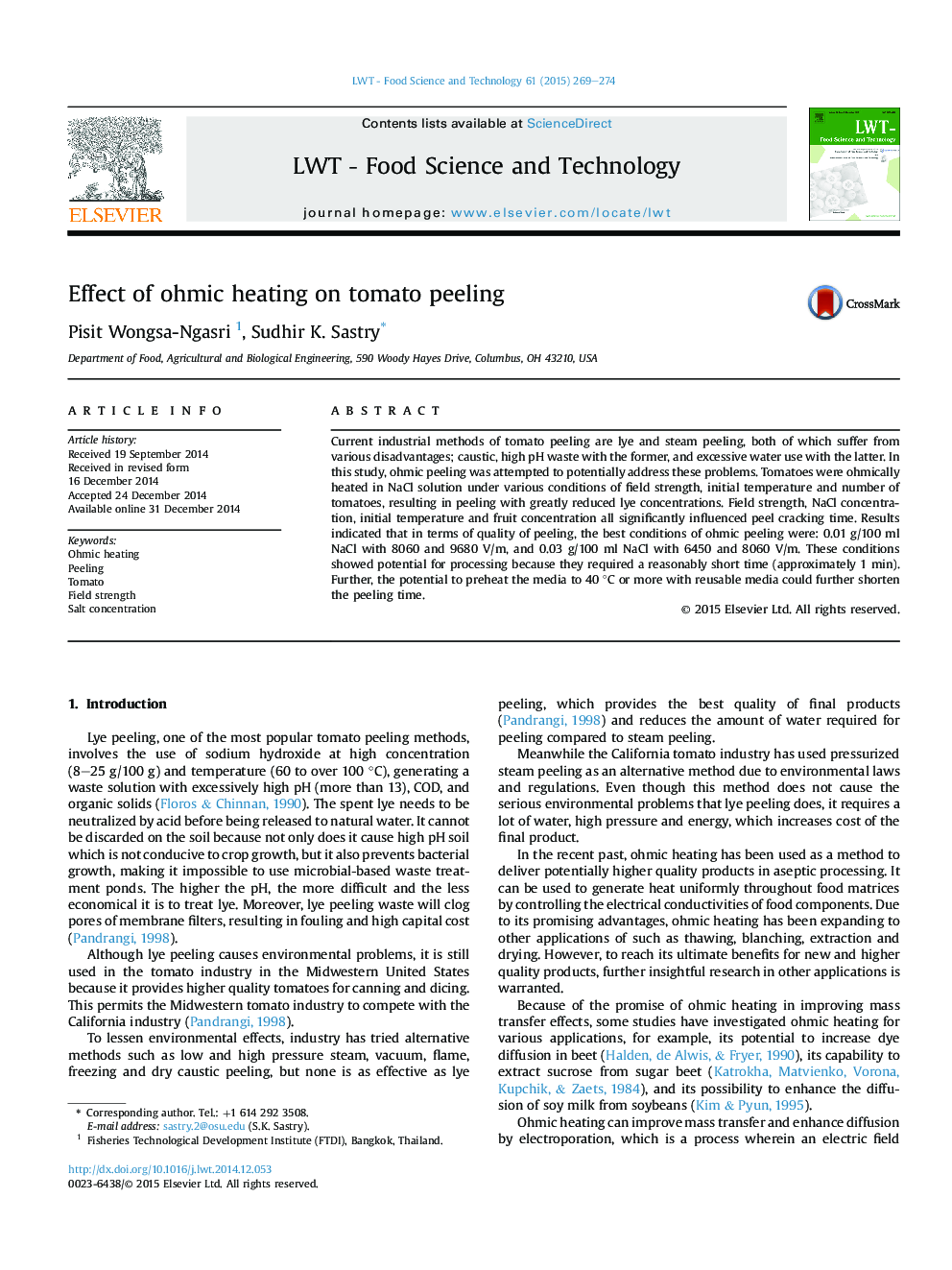| Article ID | Journal | Published Year | Pages | File Type |
|---|---|---|---|---|
| 6401123 | LWT - Food Science and Technology | 2015 | 6 Pages |
â¢Ohmic heating can peel tomatoes effectively.â¢Peeling time depends on initial temperature, salt concentration, and field strength.â¢Quality of peeling depends on initial temperature, salt concentration and field strength.â¢It is possible to reduce lye concentration when using ohmic peeling.
Current industrial methods of tomato peeling are lye and steam peeling, both of which suffer from various disadvantages; caustic, high pH waste with the former, and excessive water use with the latter. In this study, ohmic peeling was attempted to potentially address these problems. Tomatoes were ohmically heated in NaCl solution under various conditions of field strength, initial temperature and number of tomatoes, resulting in peeling with greatly reduced lye concentrations. Field strength, NaCl concentration, initial temperature and fruit concentration all significantly influenced peel cracking time. Results indicated that in terms of quality of peeling, the best conditions of ohmic peeling were: 0.01 g/100 ml NaCl with 8060 and 9680 V/m, and 0.03 g/100 ml NaCl with 6450 and 8060 V/m. These conditions showed potential for processing because they required a reasonably short time (approximately 1 min). Further, the potential to preheat the media to 40 °C or more with reusable media could further shorten the peeling time.
